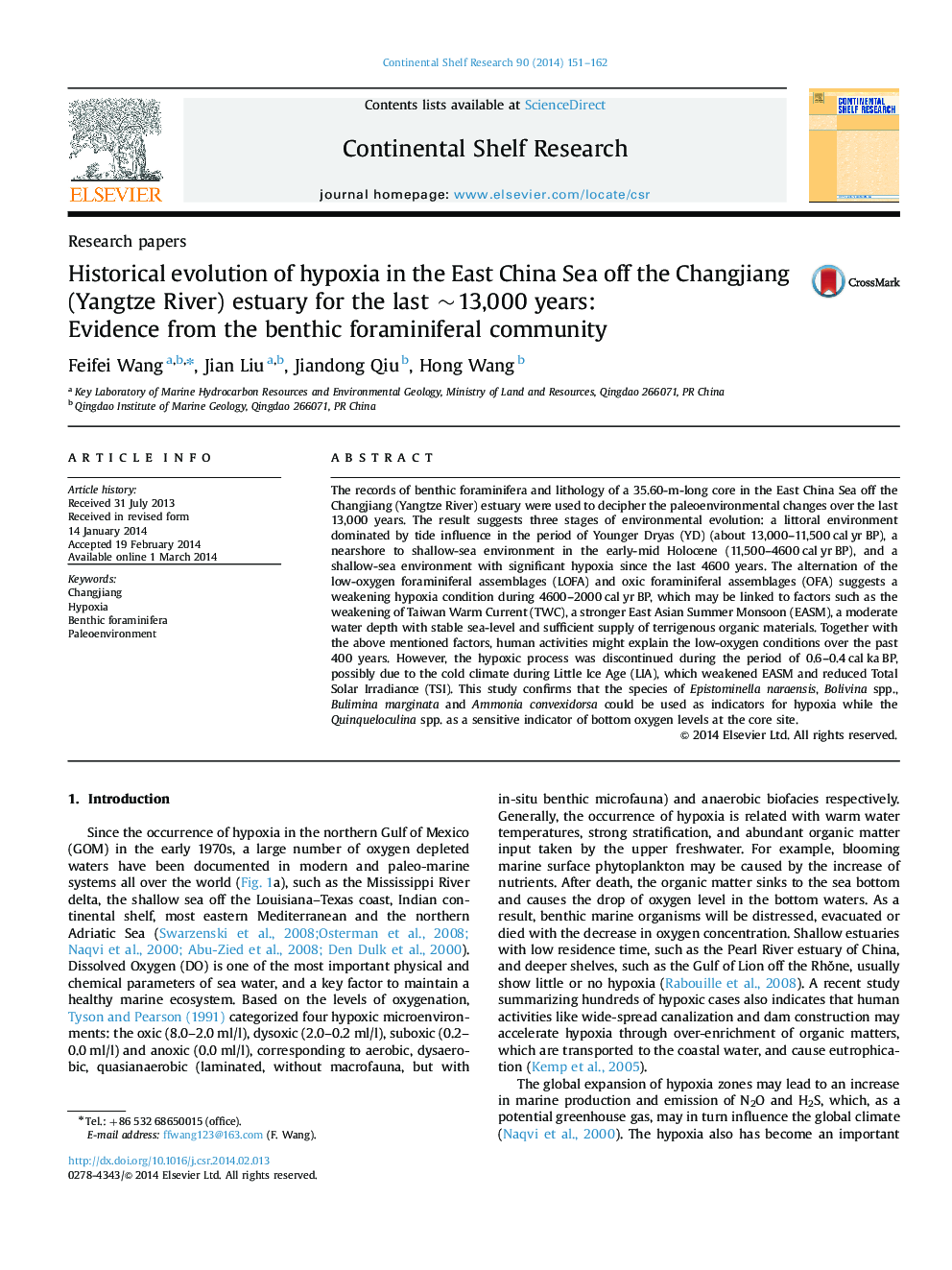| کد مقاله | کد نشریه | سال انتشار | مقاله انگلیسی | نسخه تمام متن |
|---|---|---|---|---|
| 4531807 | 1626122 | 2014 | 12 صفحه PDF | دانلود رایگان |

• Using the benthic foraminifera to discuss hypoxia evolution in the Changjiang River estuary.
• The variations of low-oxygen and oxic foraminifera indicated a weaker hypoxia in last 4600–2000 years.
• The Taiwan Warm Current, relative stronger East Asian Summer Monsoon and Total Solar Irradiance controlled the natural hypoxia.
• The human activities enhanced the hypoxia in last hundreds of years.
• Pointed out the local foraminifera species as indicators of hypoxia.
The records of benthic foraminifera and lithology of a 35.60-m-long core in the East China Sea off the Changjiang (Yangtze River) estuary were used to decipher the paleoenvironmental changes over the last 13,000 years. The result suggests three stages of environmental evolution: a littoral environment dominated by tide influence in the period of Younger Dryas (YD) (about 13,000–11,500 cal yr BP), a nearshore to shallow-sea environment in the early-mid Holocene (11,500–4600 cal yr BP), and a shallow-sea environment with significant hypoxia since the last 4600 years. The alternation of the low-oxygen foraminiferal assemblages (LOFA) and oxic foraminiferal assemblages (OFA) suggests a weakening hypoxia condition during 4600–2000 cal yr BP, which may be linked to factors such as the weakening of Taiwan Warm Current (TWC), a stronger East Asian Summer Monsoon (EASM), a moderate water depth with stable sea-level and sufficient supply of terrigenous organic materials. Together with the above mentioned factors, human activities might explain the low-oxygen conditions over the past 400 years. However, the hypoxic process was discontinued during the period of 0.6–0.4 cal ka BP, possibly due to the cold climate during Little Ice Age (LIA), which weakened EASM and reduced Total Solar Irradiance (TSI). This study confirms that the species of Epistominella naraensis, Bolivina spp., Bulimina marginata and Ammonia convexidorsa could be used as indicators for hypoxia while the Quinqueloculina spp. as a sensitive indicator of bottom oxygen levels at the core site.
Journal: Continental Shelf Research - Volume 90, 1 November 2014, Pages 151–162